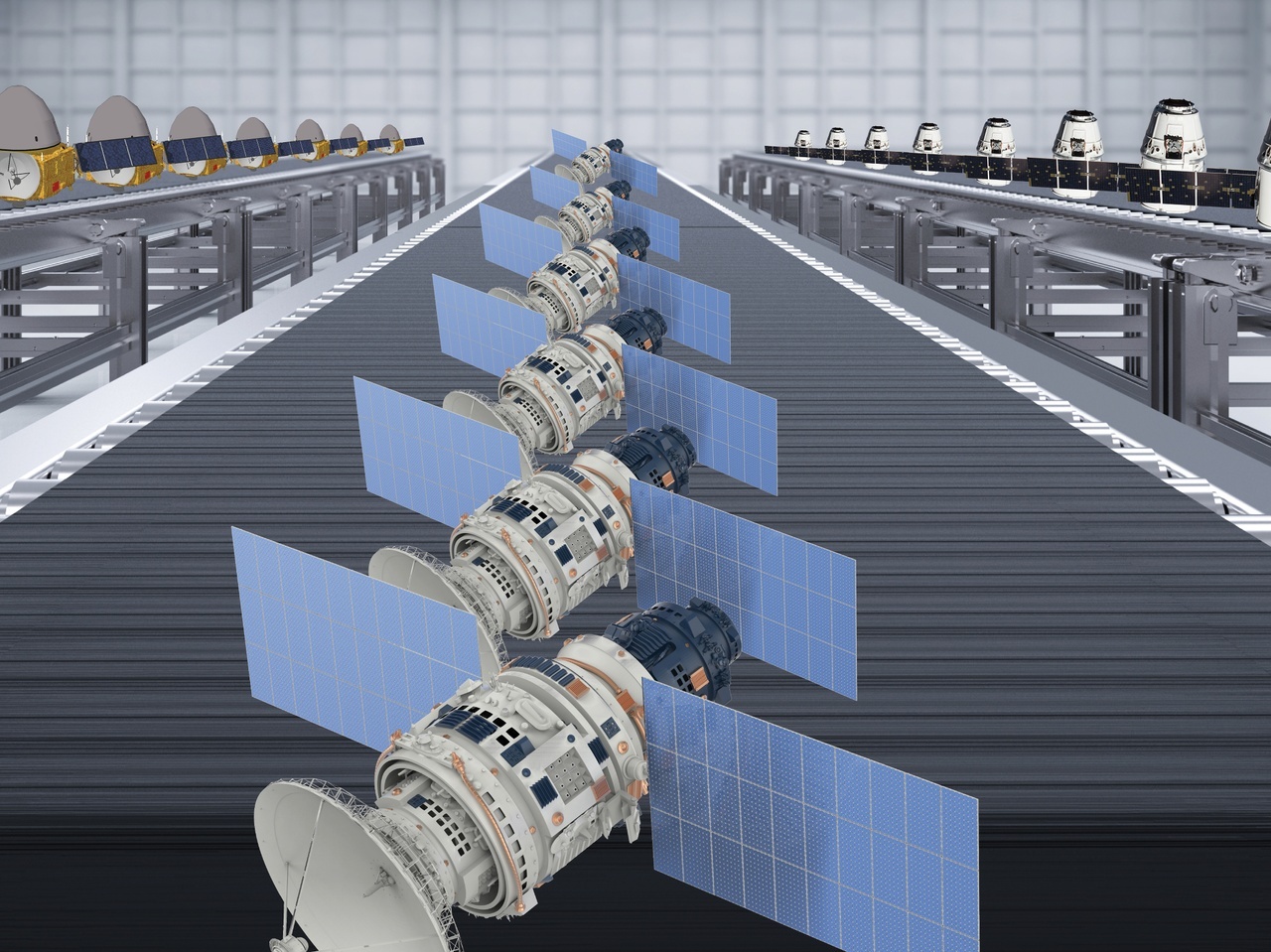
Smallsat Strategy in an Era of Shifting Geopolitical Priorities
Smallsats are a significant capability-building opportunity for new entrants in the space sector. With vertical integration and merger activity gaining momentum, openness to partnerships and strategic flexibility is a must. July 28th, 2025Rising geopolitical instability is highlighting the strategic value of small satellite system use. In national security and defense operations, resiliency and rapid responsiveness are crucial, particularly in contested theaters. Ukraine’s effective and impactful use of SpaceX’s Starlink terminals across military and NGO efforts clearly demonstrated the value of access to such assets. This success has fueled an increased government demand for high revisit synthetic aperture radar (SAR) imagery, radio frequency (RF) monitoring, and jamming detection on top of existing capabilities. As a result, more government agencies are now actively exploring investments in dedicated smallsat systems, satellites up to 500 kilograms.
Novaspace’s Prospects for the Small Satellite Market report notes that for the first time, military operators will lead other operator types in associated smallsat market value, reaching $46.7 billion (41 percent of the market value) through the next decade. This can be via dedicated budgets or through planning towards commercial procurement of third-party smallsat-based services. As geopolitics shifts continue to increase, so too has interest in sovereign space capabilities. Governments acquiring smallsat systems are investing capital beyond basic system needs, channeling resources into domestic manufacturing capabilities. A handful of them are also supporting private development in launch capabilities aiming to have access to sovereign and responsive capabilities.
As global alliances restructure, this demand for sovereign space assets will remain a strategic priority. Consequently, the addressable market for commercial smallsat companies is becoming more constrained, with long-term government prospects now emerging as a critical driver of growth.
Geopolitical Headwinds Fan Existing Market Challenges
With 70 percent of the demand in units, the smallsat industry is focusing on constellations, with intense competition in play, both in addressable market opportunity and market competitors.
Starlink aside, the more advanced commercial constellation projects are about to start full deployment in the next few years, however previous challenges like the OneWeb bankruptcy and launch hiatus due to the war in Ukraine highlight the risks to market success. In addition, complicated legal factors coupled with high inflation and uncertain returns are still affecting investors’ willingness to commit funding. This dynamic ecosystem alongside the current sovereign asset procurement pivot means that interested companies face a high risk, but high potential market.
Novaspace’s assessment of market dynamics sees the smallsat manufacturing and launch market positioned for substantial growth with the market value set to reach $113.3 billion through the decade, ~3 times the value of that in the previous 10 years. Looking specifically to military users, valued at $46.7 billion, the revenue opportunity as defense operators increase smallsat adoption is set to achieve ~5 times the value of that reached over the previous 10 years.
In satcom, smallsats are an appealing alternative to traditional capacity leasing, with GEO smallsats allowing design flexibility, “right-sized” supply, and lower CapEx than previous larger governmental Geostationary (GEO) assets. This ability to tailor capabilities to truly meet government specific needs opens the way for emerging space nations to progress sovereign space security goals.
As more emerging countries develop their own manufacturing or launch capabilities, demand retention rates increase and industry vertical integration grows, the addressable markets of many commercial smallsat players aiming to export services to third countries will be challenging. With massive upfront CapEx requirements and intense competition, smallsat players must tread carefully in strategic planning. Some constellations may have to reduce and reframe the scope of their commercial plans.
Upstream players either in satellites manufacturing subsystems or launch are now looking to expand into such subsystem potential as well as manufacturing, in-space transportation, and value-added services as these segments currently offer the best options for higher margins. Although the feasibility of mega-constellations, both on a technical and market level, has been demonstrated through Starlink’s profitability claims, the question remains whether companies that don’t have SpaceX’s vertical integration and relatively low-cost launchers to replicate this success can truly compete against it.
This is not to say that everything is negative. Looking beyond North America activity, Asian smallsat operators will witness significant and rapid growth in terms of both small satellite numbers and mass of satellites to be developed. This is partly driven by the upcoming GuoWang and Qianfan mega-constellations, already seeing a solid cadence of launches. China, India, Japan, Korea, and others are also ramping up investments in their respective space sectors aiming to procure smallsat hardware as well as data services.
Technological Innovations are Shaping Revenue Opportunities
Domestic investment does not necessarily eliminate international engagement. Looking to the subsystem level, the smallsat market is comparatively more open to procurement from third parties than at system integration, thus, opening many revenue opportunities to be captured by subsystem suppliers.
Thanks to technological innovations, smallsats are now providing operational services previously only achievable through heavier satellites. Smaller, more capable platforms and payloads — along with better chips, onboard computing, and data tools — are making it easier to develop new satellite services and reach a wider range of customers.
In Earth Observation (EO), companies focus on improving revisit rate and sensor diversity, leading to EO satellites numbers set to nearly triple through the next decade. Demand here is driven in part by sensor diversity potential (SAR, multispectral, hyperspectral, infrared, etc.) In addition, more niche applications are also developing. Technology satellites, where organizations use satellites as test beds for future technologies and payloads are positioned for growth, with an expected 125 percent increase in units this decade, emphasizing the relevance of smallsat to quickly improve Technology Readiness Levels (TRLs) and shorten the go-to-market of innovation.
Other smallsat applications of interest to government players include security factors (space situational awareness, early warning and RF monitoring constellations), science and exploration, navigation and space logistics. These are also set to accelerate in use in context of budget shortcuts in civil space agencies.
Procurement and ownership models are also evolving as satellite manufacturers are shifting away from traditional hardware sales models. Players are increasingly adopting “as-a-service" approaches. This strategic transition aims to boost profitability while attracting a broader customer base, including newly engaging space nations.
With this model, companies can have access to lease or pay-as-you-go services without the need to finance investment of the upfront CapEx necessary to acquire the hardware they need to internally develop the service. However, meeting the sovereign government demand still remains core to truly substantial revenue capture across the smallsat market. For those upstream or downstream, securing governments as anchor customers is and will remain key to sector success.
Navigating the Smallsat Ecosystem Requires Precision Planning
The first half of 2025 has already seen interesting development coming from defense ministries in western countries aiming to finally seize smallsat’s opportunities.
Starlink, Milnet, and Starshield use continues to develop, however governments globally are increasingly vocal in their concerns about using foreign commercial services for critical national security needs. Discussion of digital sovereignty is growing rapidly across all regions as exemplified by Bolivia and Australia’s ongoing examination of satellite connectivity provision within the country. Overall, the government market for smallsat players is a nuanced one, shaped by an increasingly complex global ecosystem.
Despite such challenges, smallsats still represent a significant capability-building opportunity for new entrants in the space sector. Legacy and new players should consider national and regional growth potential as well as the opportunities working with current competitors may open. With vertical integration and merger activity still gaining momentum, openness to partnerships can help open access to regional/ national opportunities while accelerating access to new innovative technological developments. Strategic flexibility is now a must. VS
Lead photo: Via Satellite archive








